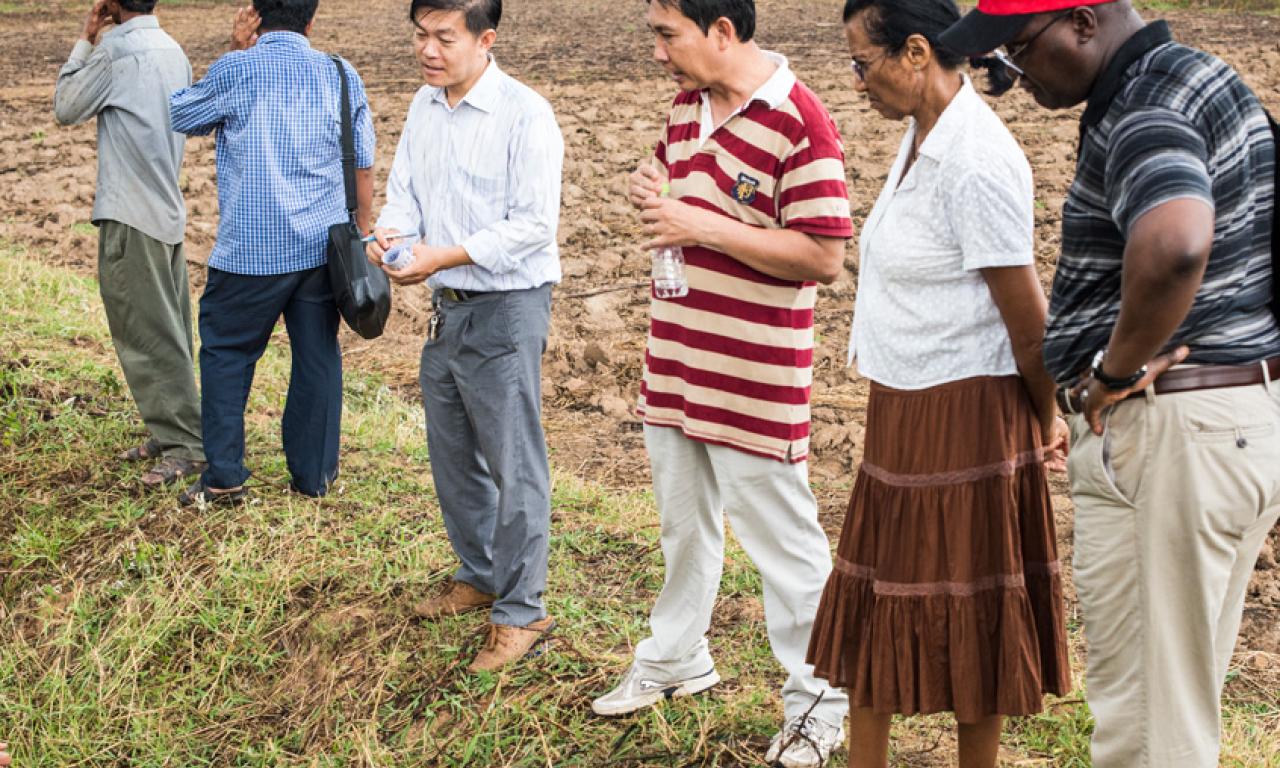
In this interview, Dr. Malu Muia Ndavi, a Lead Technical Specialist at the International Fund for Agricultural Development, discusses the challenge of linking research to impact and the importance of fish in global development efforts.
Recommended publications
- Meeting the food and nutrition needs of the poor: the role of fish and the opportunities and challenges emerging from the rise of aquaculture
- The role of fish in the first 1,000 days in Zambia. IDS Special Collection September 2014. Institute of Development Studies, Brighton.
Dr. Malu Muia Ndavi is a Lead Technical Specialist at the International Fund for Agricultural Development (IFAD), which works with poor rural people in developing countries to eliminate hunger and poverty. We talked to him about the challenge of linking research to impact and the importance of fish in global development efforts.
How important is research in providing the evidence base for IFAD investments?
We need evidence that certain systems work and that is what should guide our investments. Any research that is being done must be geared towards enhancing the long-term effectiveness of development investments.
Sometimes, there is a disconnect between agricultural research and development. Why do you think that is?
For some strange reason, the agricultural sector has always treated research as separate from development. So you do the research and then you hope somebody else will come – an extension entity, a completely different entity – to apply the work.
What has happened, especially in Africa, is that research has been done in laboratories, and then you have development out in the fields. The people who are doing research, have not had contact with the development people.
We need to overcome this gap between research and the development.
How do we provide better linkages in the research-development continuum?
There must be a structured approach to the dissemination of research outputs. Because in the past, people have done research mainly to generate information and publish and that is where it ended. And that is an outdated model.
Research doers should be brought together with the development doers, so that the development doers can see the technology gaps.
We can also learn lessons from other sectors. For example, in medicine you have the concept of “bench to the bedside”. Whatever testing you are doing, you are able to directly use research results to develop new ways to treat patients. And by the time you launch we are able to know the effect of that drug on that disease.
The recent CGIAR reforms were initiated, in part, to provide a clearer pathway from research to impact.
The current trend is in that direction, but this is work in progress. It will take some time. What we have to appreciate is the fact that the mandate of the CGIAR is not development, the mandate of CGIAR is still research. In building the bridge between the CGIAR and development, local partnerships are critical.
Do you have a view on how to better shape research outputs for development?
Donors want research outputs to use as development inputs to enhance development outcomes. So it’s not just research for the sake of it.
Smallholders need food on the table and money in their pockets. Can research do that? If a donor can see that research can do that, I am very convinced that money will be on the table.
[caption id="attachment_1163" align="alignnone" width="846"] Woman prepares vegetables for a family meal, Mongu, Western Zambia. Photo by Felix Clay/Duckrabbit.[/caption]
Woman prepares vegetables for a family meal, Mongu, Western Zambia. Photo by Felix Clay/Duckrabbit.[/caption]
What do you think the potential of fish is to affect some of these development solutions and nutrition and food security?
Today, we are struggling because of global warming, rising sea levels and an influx of seawater into farmlands, making salinity a problem for a lot of food production. But with fish, we do not have that problem. Fish have got no problem with saline water. Fish have got no problem with fresh water.
And fish is very nutritious. Take the example of small fish – it is a source of nutrition for the poor. When you look at its nutritional value I would rather eat small fish than many other types of fish.
Fish can help fight poverty and hunger in regions such as Southeast Asia. When you look at livestock, large cattle or sheep, there are not that many. But fish is key in this region and especially small fish in polyculture, where you have large fish that can be sold and small fish that can be consumed at the household level.
I would like to lay down a challenge to WorldFish to commercialize a product like the fish chutney or powder that I have seen on my recent trip to South East Asia… as I believe there is great potential here to affect serious change in nutrition security in the region.
Regional governments in Africa hope to replicate the success of Egyptian aquaculture in the rest of Africa, particularly in Sub-Saharan Africa where fish consumption is still quite low. How can this be achieved?
Africa is very diverse. There are certain parts of Africa where you have pastoralists. You bring fish, they might tell you it’s a snake. They will never touch it. The Maasai in East Africa, for example, hardly eat fish.
The key is to target the part of Sub-Saharan Africa that is suited to and interested in fish. A good example is the region around lake Victoria… Kisumu, Kampala, Bokaba to Mwanza. If you want to replicate the success of Egypt, you need to target that area. But if you start targeting North-Eastern Kenya or the Somalian border there, fish is not a part of the diet and you will not be successful.
The other thing is the question of investment. There has to be greater financial commitment on the part of African governments. That’s critical.